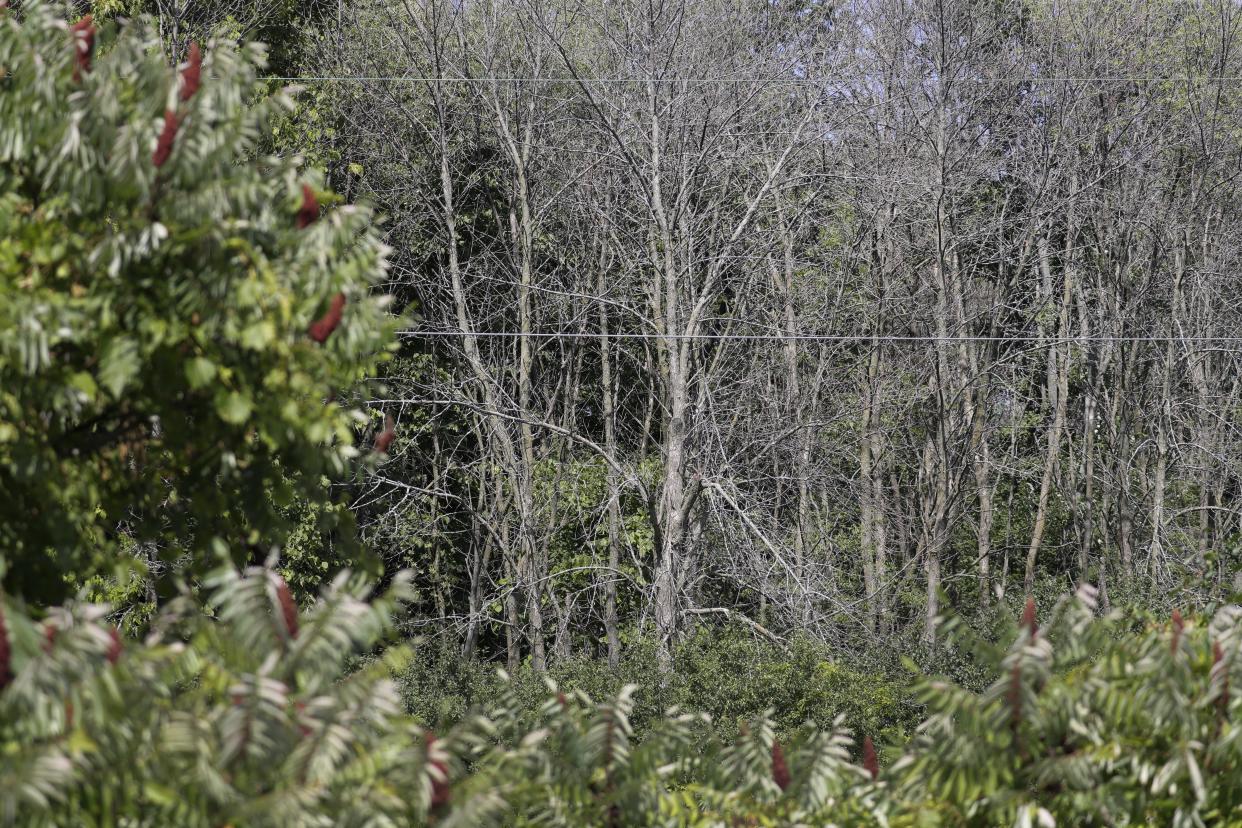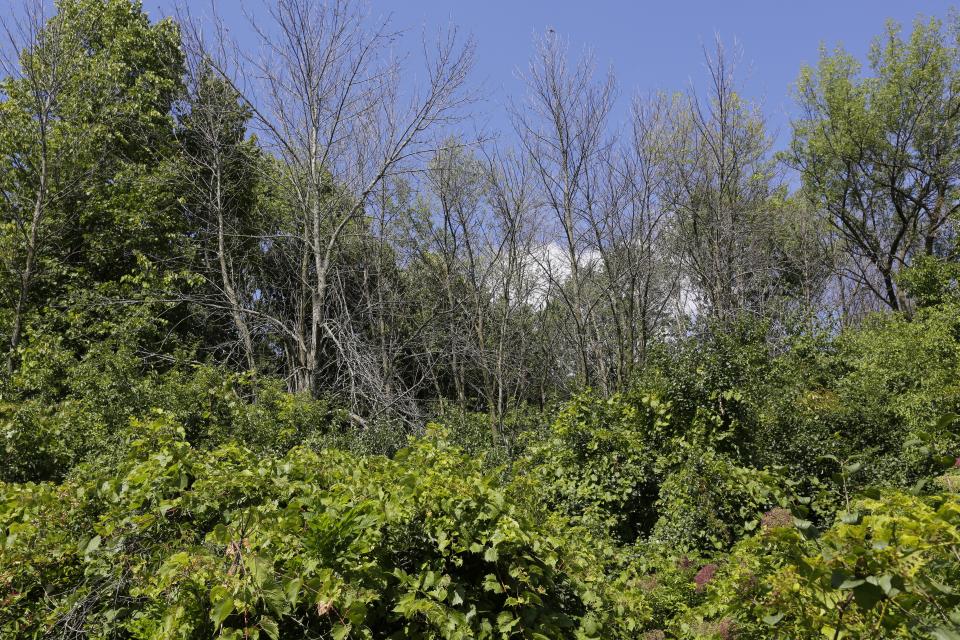What's killing Appleton's trees? It's a small but formidable foe wreaking havoc

Reader question: We live in the area of Horizons Elementary School in Appleton and noticed that many trees in our neighborhood are dying. Are they all the same type of tree? What is causing them to die?
Answer: The trees in your neighborhood that are in decline are ash trees, and they have fallen victim to the emerald ash borer.
The destruction is particularly visible on the south side of Woodland Park, but it is occurring throughout the city.
The emerald ash borer is an invasive beetle with a metallic green color. The larvae feed on vascular tissues under the bark of ash trees, interrupting the flow of nutrients and water, effectively starving the trees.
The pest was introduced from Asia and has killed of tens of millions of ash trees in 36 states, according to the U.S. Department of Agriculture's Animal and Plant Health Inspection Service.
Watchdog Q&A: Duke Behnke answers your local government questions
Appleton has been fighting the emerald ash borer since early 2015. It treats ash trees with insecticides to slow the losses, and it removes dead or weakened ash trees and replaces them with other species.
The natural area on the south side of Woodland Park, however, is not a priority right now.
Rather, the city forestry division is focused on removing stands of ash trees from high-traffic areas where, if a tree were to fall, there's a greater likelihood of injury or damage to property.
"We have some streets where three or four blocks is 100% ash trees for the street trees," City Forester Mike Stanonik said.

Dean Gazza, director of parks, recreation and facilities management, said the goal is to remove all diseased trees, including those in the parks, but with the breadth of destruction, that will take time and money.
"We prioritize the areas where people are most active," Gazza said. "Eventually, the backlog will get caught up and they can get to some of these more remote areas where the trees are dying also."
More: Spongy moth caterpillars continue to chomp away, but local populations seem under control
Post-Crescent reporter Duke Behnke answers your questions about local government. Send questions to dbehnke@gannett.com or call him at 920-993-7176.

SUPPORT LOCAL JOURNALISM: Our subscribers make this coverage possible. Click to see The Post-Crescent's special offers at postcrescent.com/subscribe and download our app on the App Store or Google Play.
This article originally appeared on Appleton Post-Crescent: What's killing Appleton's trees? It's a small but formidable foe

